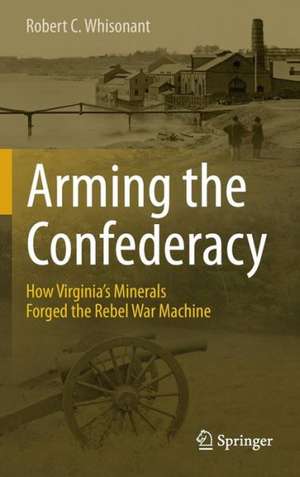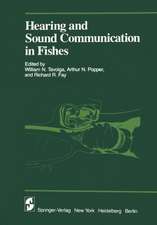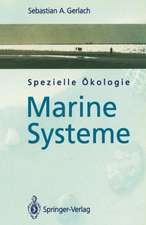Arming the Confederacy: How Virginia’s Minerals Forged the Rebel War Machine
Autor Robert C. Whisonanten Limba Engleză Hardback – 20 mar 2015
| Toate formatele și edițiile | Preț | Express |
|---|---|---|
| Paperback (1) | 232.63 lei 38-44 zile | |
| Springer International Publishing – 6 oct 2016 | 232.63 lei 38-44 zile | |
| Hardback (1) | 553.22 lei 38-44 zile | |
| Springer International Publishing – 20 mar 2015 | 553.22 lei 38-44 zile |
Preț: 553.22 lei
Nou
Puncte Express: 830
Preț estimativ în valută:
105.87€ • 114.96$ • 88.93£
105.87€ • 114.96$ • 88.93£
Carte tipărită la comandă
Livrare economică 18-24 aprilie
Preluare comenzi: 021 569.72.76
Specificații
ISBN-13: 9783319145075
ISBN-10: 331914507X
Pagini: 206
Ilustrații: XV, 206 p. 52 illus.
Dimensiuni: 155 x 235 x 19 mm
Greutate: 4.62 kg
Ediția:2015
Editura: Springer International Publishing
Colecția Springer
Locul publicării:Cham, Switzerland
ISBN-10: 331914507X
Pagini: 206
Ilustrații: XV, 206 p. 52 illus.
Dimensiuni: 155 x 235 x 19 mm
Greutate: 4.62 kg
Ediția:2015
Editura: Springer International Publishing
Colecția Springer
Locul publicării:Cham, Switzerland
Public țintă
Popular/generalDescriere
This is a fresh look at the American Civil War from the standpoint of the natural resources necessary to keep the armies in the field. This story of the links between minerals, topography, and the war in western Virginia now comes to light in a way that enhances our understanding of America’s greatest trial. Five mineral products – niter, lead, salt, iron, and coal – were absolutely essential to wage war in the 1860s. For the armies of the South, those resources were concentrated in the remote Appalachian highlands of southwestern Virginia. From the beginning of the war, the Union knew that the key to victory was the destruction or occupation of the mines, furnaces, and forges located there, as well as the railroad that moved the resources to where they were desperately needed. To achieve this, Federal forces repeatedly advanced into the treacherous mountainous terrain to fight some of the most savage battles of the War.
Cuprins
Preface.- Acknowledgements.- Introduction.- Minerals and Warfare.- Terrain and a Tale of Two Nations.- The Land They Fought For.- Niter and Gunpowder.- Bullets, Firearms, and Colonel Chiswell’s Mines.- The Lead Mines Under Attack.- The Saltville Salt Works.- Two Battles and a Massacre.- Iron, Civilizations, and War.- Virginia’s Iron Industry in the Civil War.- Coal, Confederate Mines, and the CSS Virginia.- Confederate Railroads.- Union Raiders in the New River Valley.- Epilogue.- Bibliography.- Index.
Recenzii
“This is a well-produced and well-priced book, and I would recommend it to anyone with an interest in the topic. It draws upon many useful sources and adds its own to the literature of the America Civil War—and of the application of military geology.” (Geology Today, Vol. 32 (1), January-February, 2016)
“Provides much useful information about the role of the western part of the state in that divisive war 150 years ago.” (George Kegley, The Roanoke Times, roanoke.com, June, 2015)
“Provides much useful information about the role of the western part of the state in that divisive war 150 years ago.” (George Kegley, The Roanoke Times, roanoke.com, June, 2015)
Notă biografică
A native of Gaffney, South Carolina, Robert C. Whisonant holds degrees in geology from Clemson University (B.S., 1963) and Florida State University (M.S., 1965, Ph.D., 1967). He has authored or co-authored over 100 professional publications and consulted on a number of engineering geology projects and in 1993 won the Neil Miner Award given by the National Association of Geology Teachers for outstanding university-level teaching in the United States. He also received Radford University’s Professorial Excellence Award in 2000 and in 2002 was given the Outstanding Faculty Award by the State Council of Higher Education in Virginia.
Dr. Whisonant’s current research includes developing the connections between geology and the American Civil War campaigns and battles. He has analyzed the effects of geology and topography on casualty rates on national battlefields such as Gettysburg, Chancellorsville, and Antietam. He also directed projects involving mapping and preservation of Civil War battlefield features at Saltville, Virginia, where the work was supported by NASA and the National Park Service (American Battlefield Protection Program).
Dr. Whisonant’s current research includes developing the connections between geology and the American Civil War campaigns and battles. He has analyzed the effects of geology and topography on casualty rates on national battlefields such as Gettysburg, Chancellorsville, and Antietam. He also directed projects involving mapping and preservation of Civil War battlefield features at Saltville, Virginia, where the work was supported by NASA and the National Park Service (American Battlefield Protection Program).
Textul de pe ultima copertă
This is a fresh look at the American Civil War from the standpoint of the natural resources necessary to keep the armies in the field. This story of the links between minerals, topography, and the war in western Virginia now comes to light in a way that enhances our understanding of America’s greatest trial. Five mineral products – niter, lead, salt, iron, and coal – were absolutely essential to wage war in the 1860s. For the armies of the South, those resources were concentrated in the remote Appalachian highlands of southwestern Virginia. From the beginning of the war, the Union knew that the key to victory was the destruction or occupation of the mines, furnaces, and forges located there, as well as the railroad that moved the resources to where they were desperately needed. To achieve this, Federal forces repeatedly advanced into the treacherous mountainous terrain to fight some of the most savage battles of the War.
Caracteristici
The American Civil War history of southwestern Virginia is nationally important but remains largely unknown and poorly appreciated
Explains the connections between two basic geologic factors - minerals and topography – and the military
One of few books to discuss the Civil War history of Southwestern Virginia, a unique area where mineral resources, terrain, and Civil War history are all tightly woven together
The American Civil War remains as one of the topics of greatest interest to general readers both in the United States and around the world
Explains the connections between two basic geologic factors - minerals and topography – and the military
One of few books to discuss the Civil War history of Southwestern Virginia, a unique area where mineral resources, terrain, and Civil War history are all tightly woven together
The American Civil War remains as one of the topics of greatest interest to general readers both in the United States and around the world








